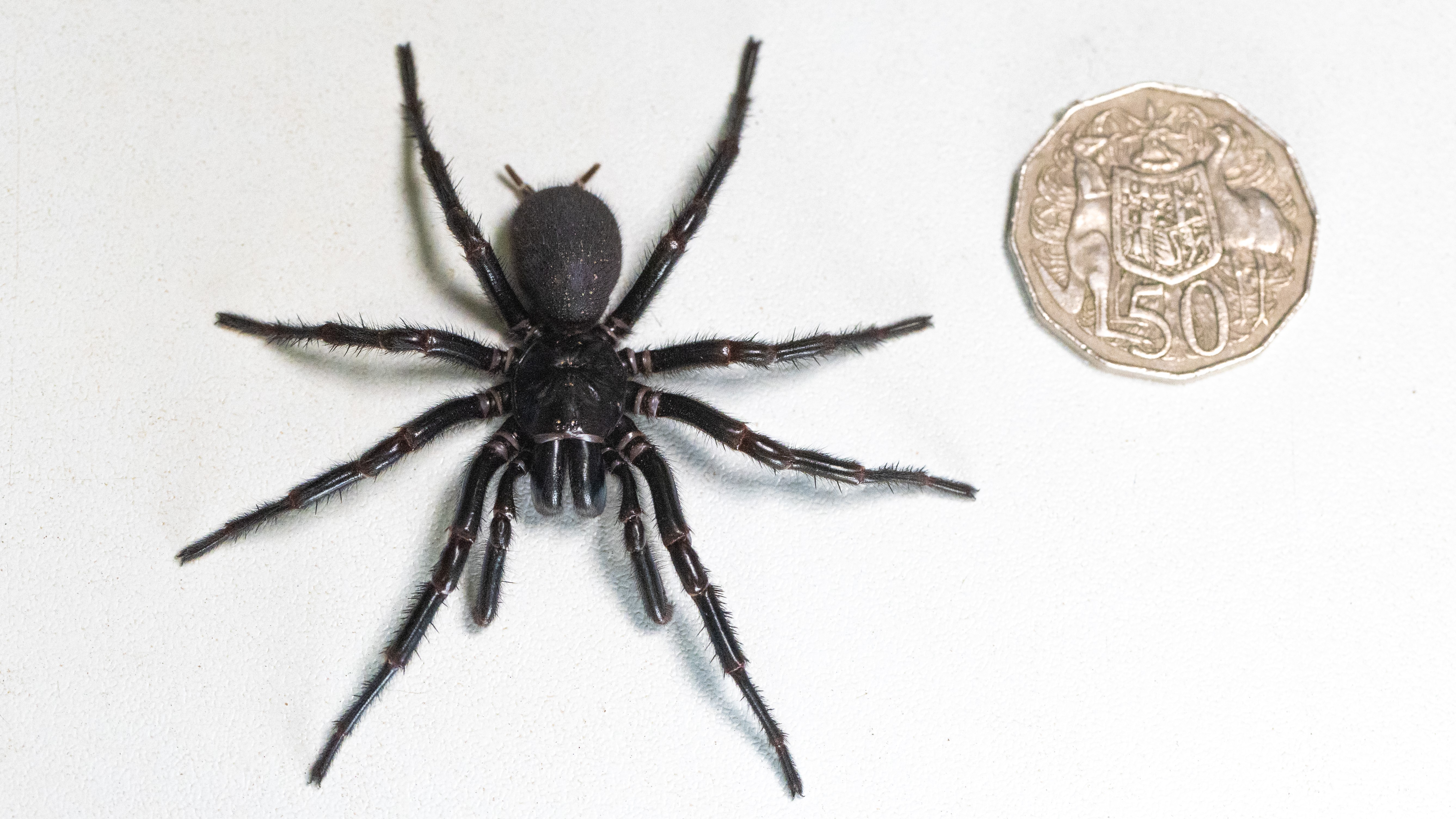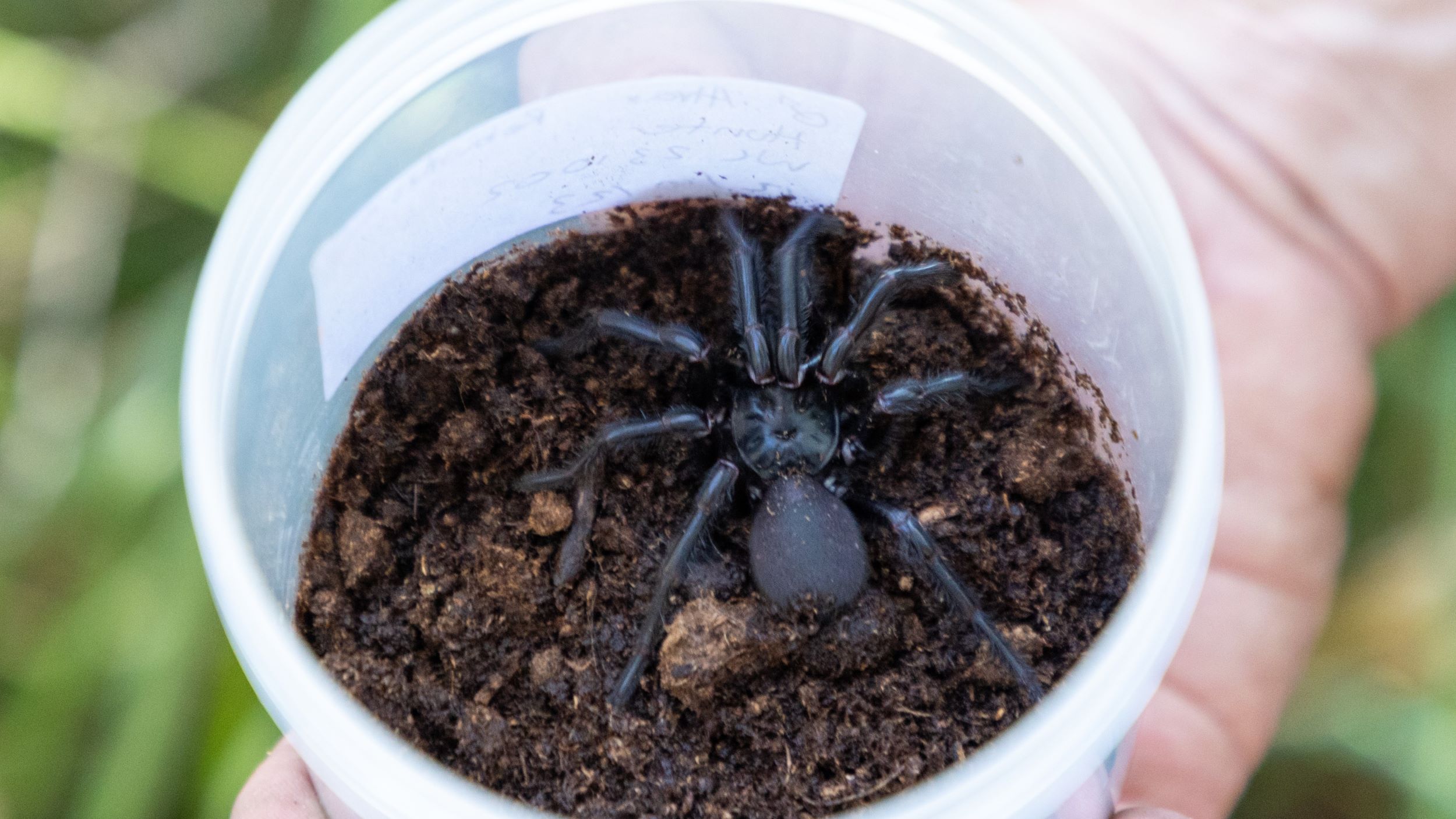
The largest male specimen yet of the most venomous spider in the world has been found in Australia.
"Hercules," a funnel-web spider, is 3.1 inches (7.9 centimeters) from hairy foot to hairy foot, according to the Associated Press — about the same diameter as an Olympic gold medal.
The spider was found about 50 miles (80 kilometers) north of Sydney and taken to a local hospital. The hospital turned the giant arachnid over to the Australian Reptile Park, a zoo in New South Wales that runs a venom-milking program. Venom from spiders and snakes is used to produce antivenom for Australian hospitals.
"Male funnel-webs, once they reach maturity, their natural lifespan is only around one year," Emma Teni, a spider-keeper at the park, said in a video provided by the AP. "So we need to constantly have them handed in by the general public, because we need them for our lifesaving antivenom program."
The male Sydney funnel-web spider (Atrax robustus) has one of the most toxic-to-humans venoms of any spider, according to the Australian Museum. Male spider venom contains a neurotoxin that affects the nervous systems of primates, including humans. Females are also venomous, but their venom does not contain this neurotoxin, according to the museum. Only male bites have caused human deaths.

Since the Australian Reptile Park launched its spider antivenom program in 1981, no one has died from funnel-web spider bites, according to the park. Every week, park staff use glass pipettes to urge spiders to bite so they can suck up droplets of venom. The venom is then frozen and used by supplier CSL Seqirus to make antivenom that can be given to patients who have been bitten.
Related: Why does Australia have so many venomous animals?
Funnel-web spiders are burrowers. They get their names from the networks of "trip wires" they spin at the entrances to their burrows, which are often shaped like a funnel of silk, according to the Australian Museum. They like moist, vegetated areas and are often found in the forested Sydney suburbs. Humans are probably most likely to encounter deadly male spiders, which leave their burrows in the summer months to look for mates.
Hercules is bigger than the Australian Reptile Park's previous record-holding male funnel-web, a specimen nicknamed Colossus who lived at the park in 2018.
Female funnel-webs are typically larger than males, and the largest the park has ever held was "Megaspider," a female donated in 2021 with a leg span of 3.14 inches (8 cm).
Funnel-webs defend themselves aggressively when threatened, rearing up on their hind legs and showing off their 0.8-inch-long (2 cm) fangs. According to the Australian Museum, they are also capable of surviving up to 30 hours underwater by trapping air bubbles around the hairs on their abdomens. Spiders are sometimes found at the bottom of pools and presumed dead, only to recover and scurry away once they dry out.







